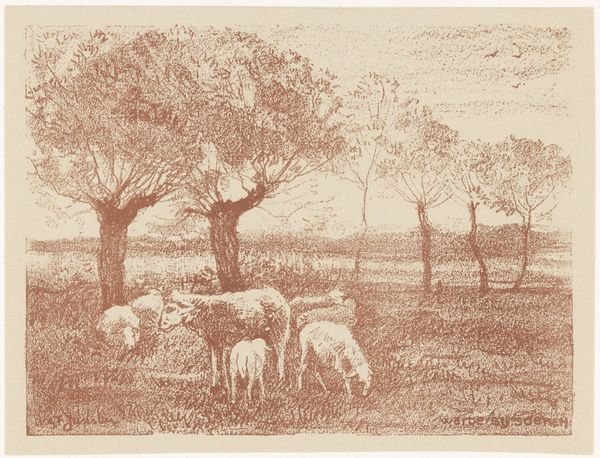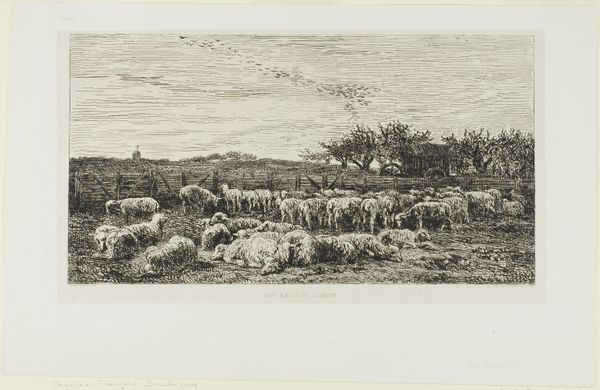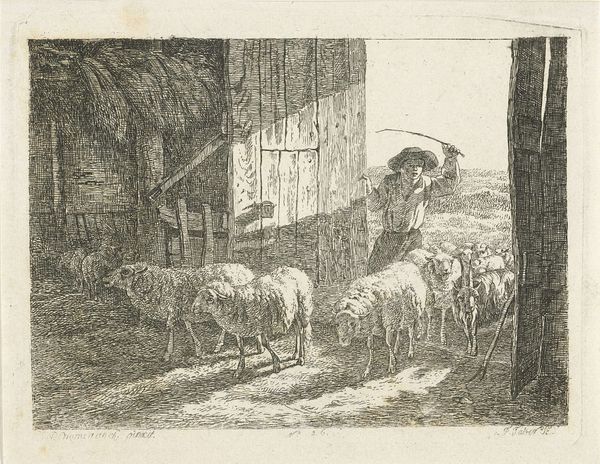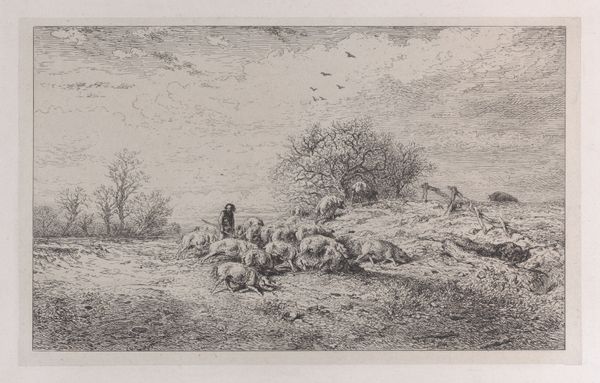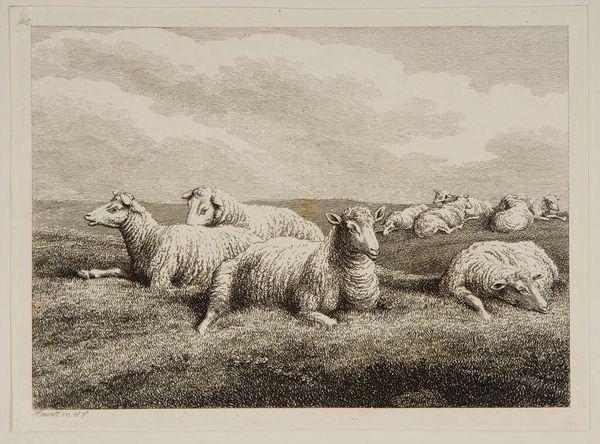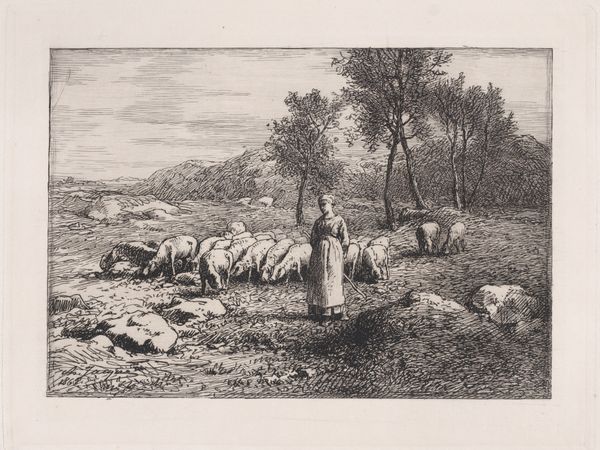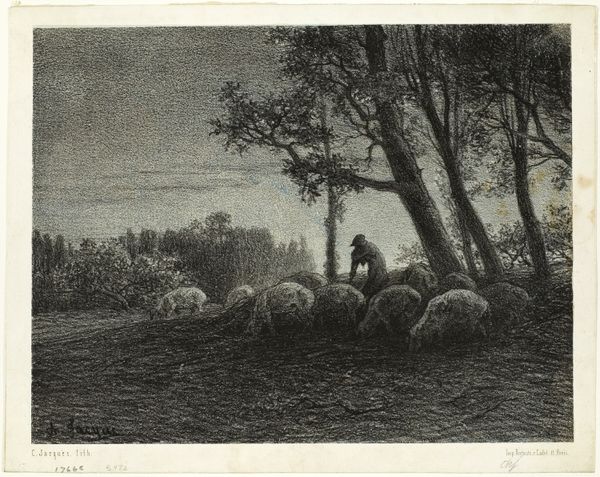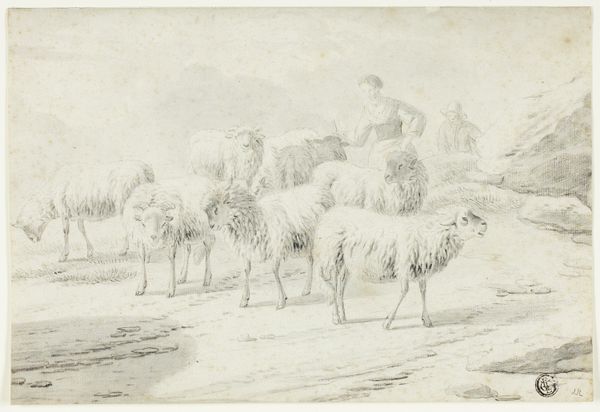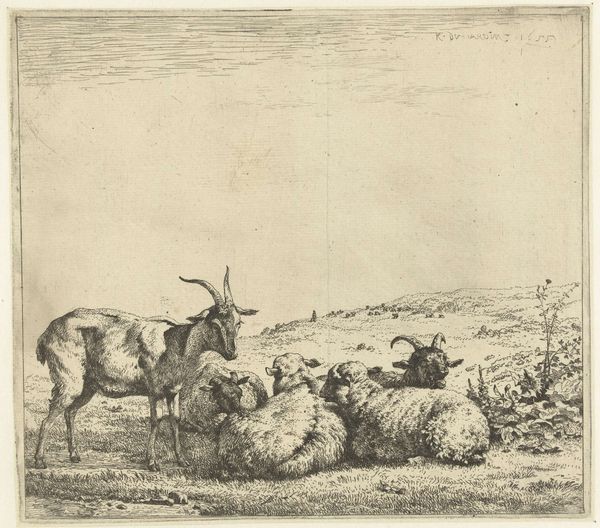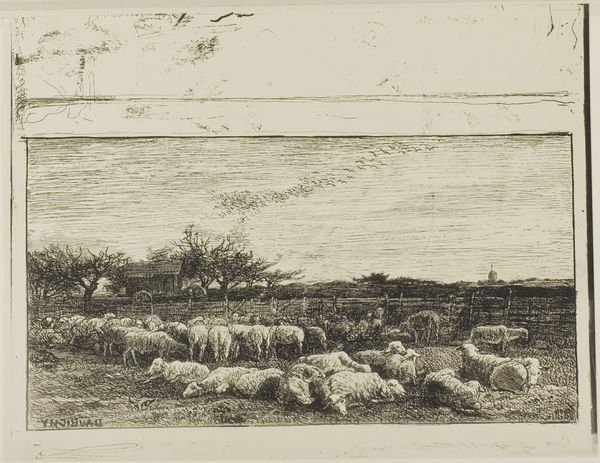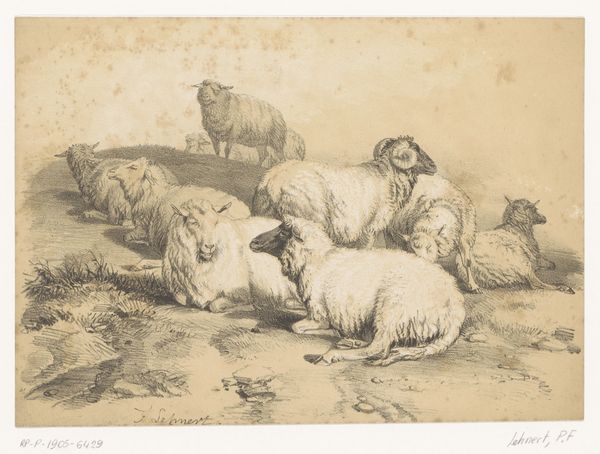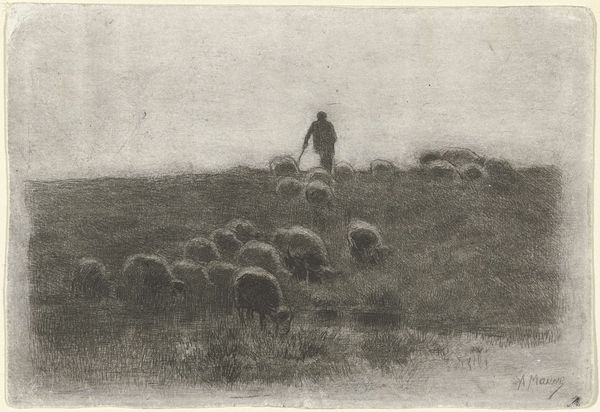
drawing, print, etching, paper
#
drawing
# print
#
etching
#
landscape
#
paper
#
pencil drawing
#
genre-painting
#
realism
Dimensions: 263 × 395 mm (image); 112 × 172 mm (plate); 263 × 395 mm (sheet)
Copyright: Public Domain
Curator: This somber landscape scene is “The Dog's Watch” by Charles-François Daubigny, created as an etching on paper in 1857. What impressions does it evoke for you? Editor: Immediately, I'm struck by the heavy atmosphere. There's a bleakness here, emphasized by the muted tones and the way the sky seems to press down on the sheep and their guardian. Curator: The symbol of the watchful dog is quite striking. Dogs in art are traditionally understood to represent loyalty and protection. Considering the period in which this work was created, what socio-political dimensions can be detected? Editor: It was made during a period of immense social change in France, a time of anxieties around urbanization and rural life. A print like this would likely appeal to a growing urban audience who had sentimental attachments to the countryside that they were becoming disconnected from. The loyal dog protects and oversees these vulnerable animals and echoes anxieties around class and labor at the time. Curator: And yet, Daubigny doesn't present a straightforward idyllic scene. There’s a distinct melancholic quality. In terms of art history, the symbol is rendered using highly realistic style and tones. I am intrigued about how his realistic style, coupled with subtle iconography, would influence artistic movements to come. Editor: Indeed. And it speaks to the power of printmaking at the time. It became the means to rapidly disseminate and popularize these themes in an accessible form for broader society. Consider the proliferation of inexpensive imagery which was revolutionary for its time. It enabled ordinary people access to depictions that had previously been enjoyed by the elite only. Curator: I am especially taken by the seemingly desolate atmosphere. There’s so much nuance to unpack in this single image. I wonder, in today's socio-cultural climate, what does an image like this stand for? Editor: Perhaps a reminder of simpler times. Perhaps also of the costs associated with the nostalgia for a time that also involved significant levels of exploitation and inequality. It is fascinating how this simple composition continues to provoke contemplation today.
Comments
No comments
Be the first to comment and join the conversation on the ultimate creative platform.
